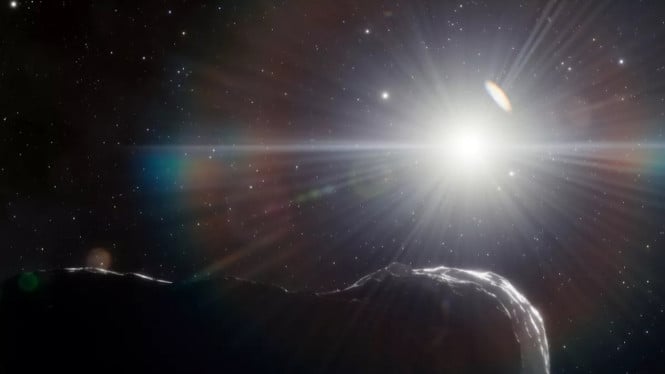Astronomers Found ‘Planet Killer’ Asteroid Possibly Risk to Earth
- Dark Energy Camera (DEC)
VIVA – Astronomers have discovered a giant asteroid lurking in the sun's rays that possibly meet Earth one day. The 0.9-mile (1.5-kilometer) wide asteroid is the largest potentially dangerous space rock ever seen in the last eight years and astronomers call it the 'planet killer' because its impact will be felt on multiple continents.
The asteroid 2022 AP7 has eluded detection for so long as it orbits in the region between Earth and Venus. To see the space rocks in this area, astronomers have to look toward the Sun and that is difficult because of the luminosity the Sun.
For example, flagship telescopes such as the James Webb Space Telescope and the Hubble Space Telescope never look toward the Sun because the star's brightness would fry their sensitive optics.
Because of that, Astronomers have only a limited understanding of the nature of asteroids lurking in this region, and sometimes surprises can occur.
In 2013, a much smaller asteroid, just 66 feet (20 m) wide, arrived from the Sun without warning. The asteroid exploded over the city of Chelyabinsk in southeastern Russia, shattering windows in thousands of buildings.
Asteroid / komet.
- Firstpost
Astronomer at the Earth and Planetary Laboratory of the Carnegie Institution for Science, Scott S. Sheppard, said that only about 25 asteroids orbiting fully within Earth's orbit have been discovered to date due to the difficulty of observing near glare from the Sun.
As quoted from the Space website, Wednesday, November 2, 2022, the discovery of AP7 2022, which would be far more destructive than Chelyabinsk if it hit Earth, was made thanks to the supersensitive Dark Energy Camera (DEC) at the Cerro Tololo Inter-American Observatory in Chile, which scans the sky during the twilight hours when this asteroid can be detected.
"So far, we have found two large near-Earth asteroids that are about 1 kilometer (0.6 miles) wide, the size of what we call planet killers," Sheppard said.
Asteroids in the inner solar system are very difficult to detect, they are under-represented in models of the rock population of the solar system as a whole. However, Sheppard believes that only a few unknown planetary killers are in this hard-to-observe region.
The good news is that most of these unknown asteroids likely follow orbits that move them away from Earth.
"There are probably only a few of the same size left to be discovered, and these large undiscovered asteroids likely have orbits that keep them in the orbits of Earth and Venus most of the time," Sheppard explained.
In addition to the potentially threatening AP7 2022, astronomers discovered two other smaller space rocks under DEC observations, one of which is the closest to the Sun ever seen.
Because of its proximity to the star at the center of the Solar System, the asteroid, named 2021 PH27, is experiencing the greatest general relativity effect of all solar system objects, the scientists said in a statement.



























